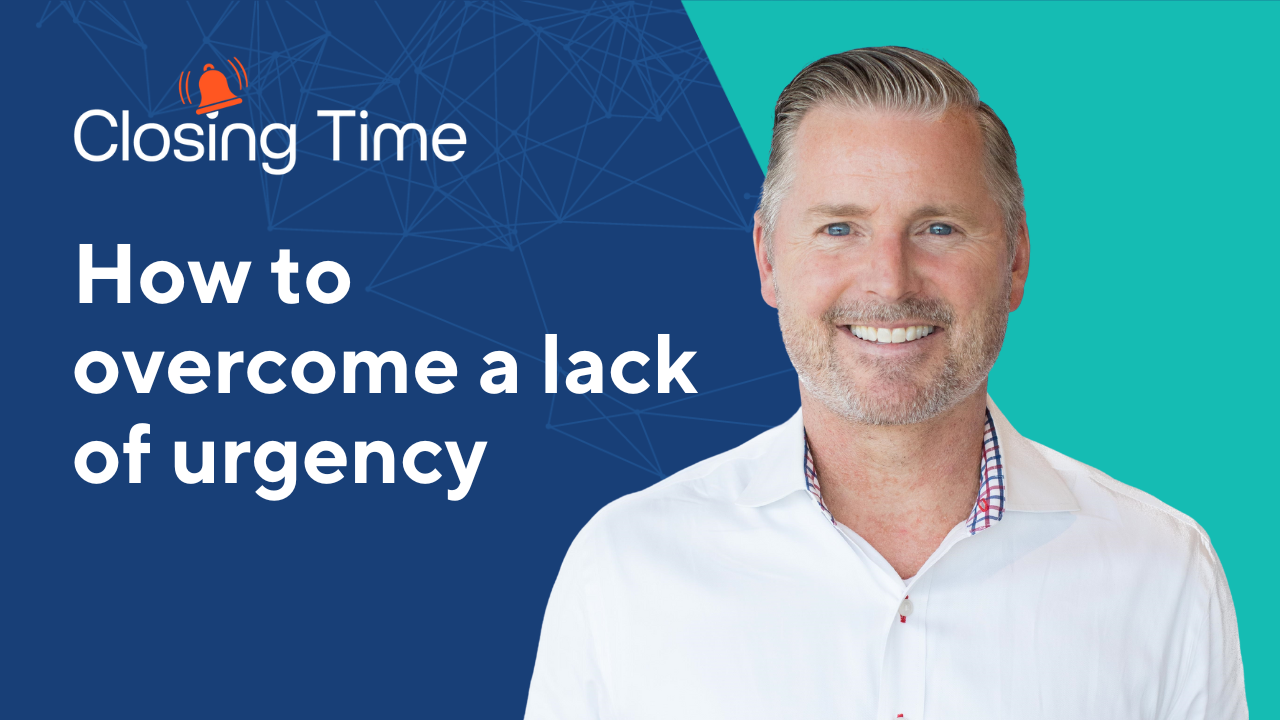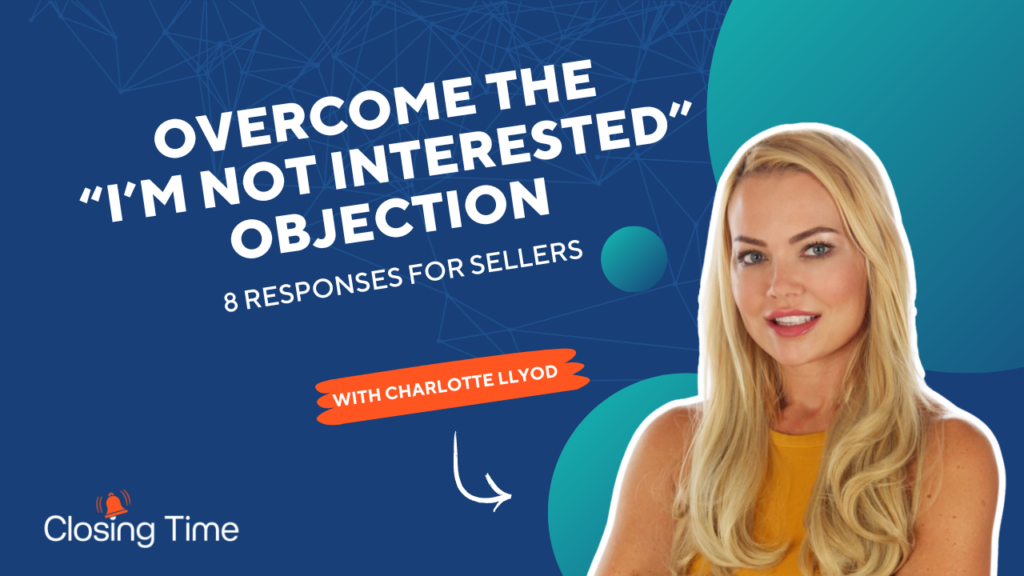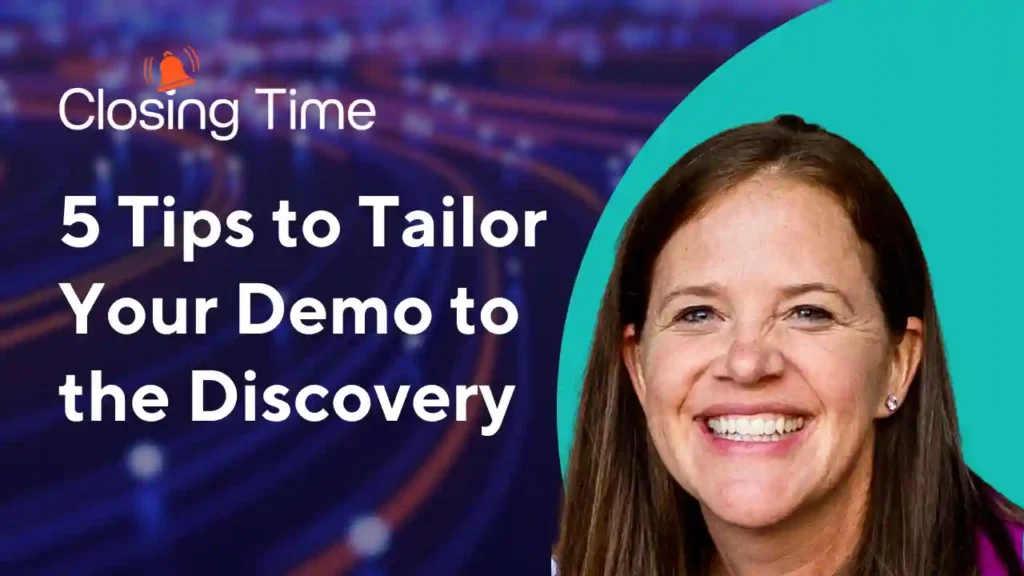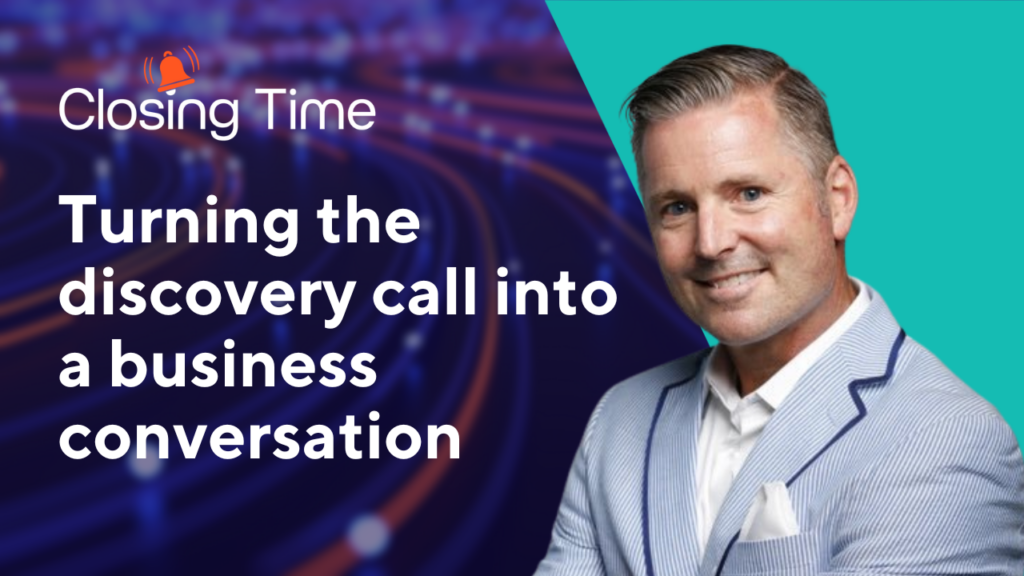Your prospect wants to buy, but not for another six months. We’re talking all about how to overcome a lack of urgency. In this episode of Closing Time. Hi everyone. I’m Chip House, CMO at Insightly. Welcome to Closing Time the show for go-to-market Leaders. I’m joined today by Doug Landis. Doug coaches SaaS businesses through his role as growth partner at Emergence Capital. Hey, Doug. What’s happening, Chip? It’s good to see you again. Hey, Doug. What’s happening, Chip? It’s good to see you again. It’s great to have you back for part two of the discussion we started a little while ago. So, Doug, so when a prospect says, hey,. I’m going to need to delay this for a three or six or nine months, you know, what are they telling you? And what do you do about it? Absolutely. Absolutely. The first time, any time someone says like, hey, what we had originally agreed upon or originally discussed is now different than what, you know, maybe I have anticipated as the seller. The first question. I want to ask is, OK, hey, Chip, what’s changed? And at the end of the day, I’m afraid that I have done us a disservice because my ultimate goal, as I said in the very beginning, back in part one, was to help us get to a decision. Right. Because I don’t want us to end up in that bucket at the over 50% bucket of no decision. And it feels to me like we’re leaning that way or heading in that direction. And so for me, maybe we haven’t done enough or I haven’t done enough to to guide this conversation into the real pain and loss and cost associated with that current state you have. Because urgency is created when you really understand the negative consequences, the cost, loss and suffering of sticking with your current state one more day. So if we don’t understand that and we haven’t had that conversation, then that’s the conversation that I would suggest we have. First conversation is all about why change, the second conversation to create urgency, is all about why now? And you create that by really digging into that cost and loss and suffering of sticking with that current state. Yeah, I love that because again, with the previous conversation we talked about as a buyer,. I’ve got this bias towards status quo, right? And I have to get comfortable with you, you as a person, number one, and you, you know, whatever solution you’re selling kind of number two, and you mentioned why change, why now? And you kind of have to tackle those two things before you can get to why us right? Absolutely. Absolutely. 100%. Unfortunately, most sellers are do everything backwards. They lead with why us. They show up to a conversation, they pitch, right?. And look to no defense of the sellers. But the reality is, as buyers, you’re like, tell me, give me the pitch, pitch. Show me a demo, pitch.. Show me demo, pitch show me the demo. Right. You’re constantly pushing us. And as yes people, we’re like, OK, if that’s really what you want. If you feel like you’re ready, then. OK, here’s our point of view of the world. But my challenge to everybody is if you, Chip, were ever to say, well, you know, just just show me a demo or just just tell me all about your world and your solution, I’m going to challenge you everyone today to say no. Woo, that’s hard. It makes you uncomfortable. No one likes to say no, but I’m going to challenge you to say no. So, Chip, if you were to ask me, like, just give me a demo, you know, my response would be, say, Chip, I’m sorry. I don’t feel comfortable with that. Two things are going to happen. Number one, you’re like what? Sales people don’t say no to me. But number two, it’s a pattern interrupt. My next response, by the way, is critical. You cannot forget this and it is. I don’t believe I’ve earned the right. But if you give me 3 minutes,. I feel like we can get there. So what I’m doing is I’m setting the expectations that it’s my job to earn the right to actually give a pitch or give a demo. But I don’t feel like we’re there. We talked in our last conversation about this current state that you have and how it’s not the best. And we started to talk a little bit about who’s impacted now based on my conversation with Sue, who runs, because we use the Casper example, who runs Mattress Firm. She’s the CMO over there. Some of the things that she was telling me is every day she’s stuck with her current solution. She realized that it was causing delays in shipments by at least a week, and that delay in shipments was a direct impact to their bottom line. I’m curious, and my hunch is you might be in a similar place, but I could be wrong. So we’re really going to do is I’m using another customer and a person in a role and what they’ve shared with me to try and create a scenario that I feel like might be similar to yours that helps to drive that urgency. Makes it makes a ton of sense. So I mean, you’re basically getting them comfortable by suggesting some other people that you’ve worked with that have had similar problems. Right. And then they’re not going to share their specific pain maybe until you’ve kind of proven that you kind of understand it. Well, what I’m really trying to do is demonstrate that, look, I think I might get you fairly well. Now, I use the word might because I can’t assume anything, but my job is to build connection, demonstrate credibility, and show empathy. I’m showing empathy by bringing other customers into the conversation and saying, look,. I think there might be some similarities here. And if you’re like Sue, then you might not want to wait, because she was telling me that there’s real costs associated with it. So the idea of waiting six months, you know, the question is, is what are you going to what are you what are you going to reallocate your time, energy and resources towards? And is that more of a cost savings than solving for this. And so when you’re doing this, Doug, you know, are you going to wait for them to kind of have the light bulb go on? Apparently, like, OK, now I have them officially agreeing with me, that they understand why change and why now? Or do I just kind of then plow into, you know, why they should buy from you? Well, no, I am a firm believer in I don’t move forward until we’re both on the same page. Yeah. So so I want you to tell me in your words why you think changing away from your current state makes sense. I might write this down in my CRM because I want to know specifically that I have got a real opportunity at some point in time. And I know that opportunity may close six, nine months down the road. So now I got to focus on the Why Now piece and my conversation, I’m not going to let us go until we both agree that changing now makes more sense than it does waiting three, six, nine months. And once we both agree to that, then I’m going to give you my view of the world. And again, remember, my goal was to help you make a decision. Once you understand that making a decision makes sense to move away from what you’re currently doing and making the decision makes sense for you to do that now versus waiting, then let’s talk about your options. Yeah. And we are one of your options, and I believe we might be the best option because I’ve demonstrated to you that I feel like I get you fairly well and we’ve done this before. It’s interesting. I mean, I think the subtle language there the use of might seems really important to me because it’s it’s about not sounding overly sure. Right. You know, and you’re sort of bringing them along as a friend, you know, and you’re sort of a trusted advisor, frankly, you know, when you use that kind of language, it reminds me. So I had the discussion with Todd Caponi who wrote the Transparency Sale, you know, and he’s talking about how he was challenged by a prospect to say, you know, hey, we’re probably going to go with your competitor. But, OK, tell me why you’re better. And he’s like, well, can I tell you first why the competitor might be better? Right. And so he just brought them along, created all sorts of trust in that way, you know, which which is, you know, super powerful, I think. And what you’re kind of language you’re talking about is sort of along the same line so, you know, you give another stat, Doug, that I’ve heard you talk about, which is 53% of the buying decision is made based on the sales experience. Is that true? It is true. It is so true. Todd, by the way, I love you. He’s a brother from another mother. We speak the same language. And look, the reality is, is what Todd is doing and being transparent is similar to what I’m recommending in this business conversation framework, which is building that connection, demonstrating credibility, you know, showing empathy, being real, being honest, not trying to be a snake oil salesman, but just trying to recognize the fact that, look, you might be similar to all these other people that I’ve worked through and I’ve spoken to that it feel like you’re in a very similar position. And by showing up with a hypothesis or a point of view, which you need to do, two things happen. Number one, you demonstrate empathy because you’re showing that you put in the work. And number two, oh, this is what drives me nuts. You’re no longer putting the responsibility and all the heavy lifting on the buyer by asking you a bunch of questions. I’m basically putting all the work and the responsibility on you, and buyers hate that because, number one, you don’t know when it’s going to end. Number two,. I just want to get off this call because, you know, I’m going to so I’m going to start telling you what I think you want to hear. And now you’ve got this opportunity that you think is an opportunity. But it’s not really because I don’t really care if you follow a different framework and if you are if you follow this business conversation framework, if you follow the transparency sale models, what you’re really doing is you’re developing a relationship, building rapport because people buy from people they like and that they trust. And so you’re going to be in that 53% win category based on the experience because of how you show up in every conversation. By the way, it may seem really hard because we talk about doing homework and doing all this preparation, but at the end of the day, it just takes some practice it’s not rocket science, industry, company, persona, current state, other companies that are similar. Why change? Why now? Let’s create some urgency identify the negative consequences associated with sticking with that current state and who’s impacted. And be honest that you may or may not be the right solution. But at the end of the day, my end goal is to help you make a decision more than anything. Yeah. Doug, super helpful. Thanks so much for these tips. You know, there’s a lot of great tips in there to inject urgency into the sales process and use just better words a more thoughtful, researched approach so I’m kind of wondering,. Doug, when is your book coming out? That’s a great question I need to get with Todd and figure out how to crank these out so quickly. Yeah. I spend too much time focusing in the weeds of our portfolio companies. That’s a little harder. Sure, sure. Well, you know, the real world experience makes a huge difference. So any last words of advice before we go? You know, here’s the best thing in following this framework in particular, especially when you show up to the conversation using the words like “my hunch is,” “I’ve got a hunch,” or “I have a hypothesis,” using the words like “might” really, really help. But here’s the good news. You don’t have to be right. If I was wrong on my hypothesis to you, Chip, as the CMO of Casper, you would just correct me. You’d appreciate the fact that I put in the work and I put in the effort and say, you know, you’re you’re kind of right.. But actually, we’re not like Mattress Firm. In fact, we’re way more hyper focused on X we’re more hyper focused on supply chain issues like, oh, that’s really interesting. Thank you for sharing that, because now we’re in a conversation. So you don’t have to be right. You just have to put in the work and just remember, selling is just a series of conversations. At the end of the day, we’re just having a conversation to see if it makes sense for us to have another one. And if so, who else should be involved? Yeah, I think that’s a great way to think about it, Doug. And unfortunately, we are out of time today, so thanks again for joining us. Just great stuff. Absolutely. Thanks for having me.. Yeah, for sure. And let’s find a time in the future to do it again, potentially. And for all of you watching, remember to subscribe to this channel, please like this video, and hit the bell for notifications so you don’t miss an episode. We’ll see you next time, on Closing Time.






